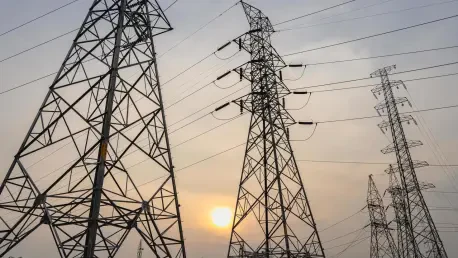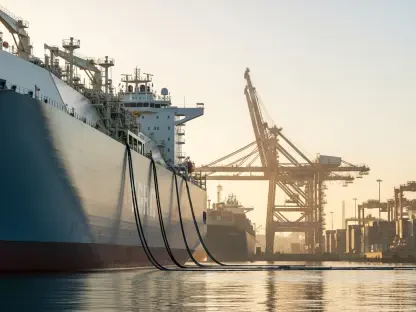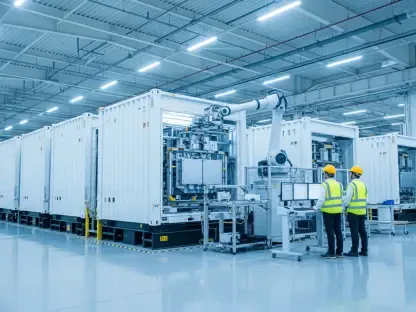In today’s ever-evolving energy landscape, ensuring a stable and reliable power supply is more crucial than ever. With the Southeast’s declining excess capacity, the Expedited Resource Adequacy Study (ERAS) proposed by the Southwest Power Pool is positioned as a key initiative to tackle emerging challenges. We dive into the intricacies of this proposal with Christopher Hailstone, an authority on energy management and grid reliability. He sheds light on the significance of the ERAS, its unique processes, and the broader implications for the energy grid.
Can you explain the purpose of the Expedited Resource Adequacy Study and why it’s considered necessary at this time?
The ERAS is designed to address a pressing concern—the dwindling excess capacity in our power grid. As we approach the end of this decade, we’re seeing a sharp decline in the excess power we have available. Without adequate interventions, this could pose serious risks to reliability. ERAS offers a streamlined path to quickly bring new generating resources online, ensuring we can meet demand and maintain a stable grid.
How does the ERAS aim to accelerate the addition of new generating resources to the grid?
ERAS provides utilities with a well-defined framework to fast-track projects that can bolster our grid’s capacity. By setting clear timelines and criteria, it allows for quicker integration of new generation sources compared to the traditional processes. This is particularly vital during this transitional period as we work towards more permanent infrastructural reforms.
What are the key amendments that SPP plans to file with the Federal Energy Regulatory Commission to implement the ERAS proposal?
SPP intends to amend its governing documents to introduce ERAS formally. These amendments will outline the procedures, eligibility criteria, and the expedited timelines for interconnection that ERAS supports. By doing so, SPP aims to create a regulatory framework that supports a swift response to the current capacity challenges.
Why is excess capacity in the Southwest Power Pool region expected to decline to 5% by 2029?
Several factors contribute to this decline. Retirements of older plants, growing demand, and the slow pace of new resource development have all led to this trend. Additionally, the shift towards more sustainable energy sources, while beneficial, requires time to match the current capacity levels provided by traditional energy sources.
What specific challenges or risks does dwindling excess generating capacity pose to grid reliability?
The most immediate risk is the potential for power shortages during peak demand times. With less buffer capacity, any unexpected spikes in demand or disruptions in supply could lead to outages. Ensuring grid reliability requires not just maintaining existing capacity but also planning for contingencies and emergencies.
What kinds of projects or generating resources are eligible under the ERAS process?
Eligibility is targeted at new generation projects that are spearheaded by load responsible entities. These projects must demonstrate the capability to become operational within five years of signing a generation interconnection agreement, ensuring they contribute to the grid in a timely manner.
Could you elaborate on how the ERAS process differs from SPP’s standard generation interconnection queue?
ERAS operates as a separate, one-time process that allows selected projects to bypass some of the typical bottlenecks in the standard queue. It’s specifically structured to deal with urgent capacity needs without altering the broader procedural framework that governs normal interconnection requests.
How will projects from SPP’s most recent batch of interconnection study requests be given the option to transfer to the ERAS queue?
Projects that were part of the latest interconnection study batch will be offered a voluntary option to shift to the ERAS queue. This flexibility allows project developers to take advantage of the expedited process, provided they meet the ERAS criteria, without starting their submissions from scratch.
What are some concerns or criticisms that stakeholders have raised about the ERAS proposal, and how does SPP plan to address them?
One of the main concerns is the potential for unfair treatment, as ERAS offers certain projects quicker interconnection paths. Stakeholders worry this might conflict with SPP’s principle of treating all customers equitably. SPP has assured that it will uphold fairness, ensuring ERAS doesn’t detract from its commitment to non-discrimination in its operations.
How does the ERAS proposal ensure that all customers are treated fairly despite offering an expedited path to interconnection for certain projects?
SPP is committed to maintaining transparency and fairness in implementing ERAS. The eligibility criteria are crafted to ensure that the most critical projects receive priority, but not at the expense of comprehensive stakeholder input and careful oversight to prevent any bias in the process.
In what ways is ERAS different from or complementary to broader interconnection reforms currently being worked on by SPP?
ERAS serves as an immediate measure to bridge the gap during ongoing reforms. While broader reforms aim to overhaul the interconnection process comprehensively, ERAS provides a targeted solution to address imminent threats to grid reliability, acting as a temporary yet crucial supplement.
Can you describe the expected timeline for submitting projects and granting interconnection rights under ERAS?
The timeline is structured to allow submissions as early as August, with the possibility of granting interconnection rights by April 2026. This expedited schedule is crucial for meeting demand projections while aligning with the operators’ reliability standards.
What measures or strategies is SPP considering to meet reliability needs if excess capacity continues to dwindle?
In addition to ERAS, SPP is exploring enhanced demand response strategies and evaluating new technologies that can boost efficiency. Collaborative efforts with stakeholders are also ongoing to drive innovation and find solutions tailored to anticipated capacity challenges.
How does SPP plan to maintain principles of independence, fairness, and equity while implementing the ERAS initiative?
SPP is reinforcing its commitment to these principles by ensuring that the ERAS process is transparent and inclusive. Stakeholder engagement is crucial, and all operational decisions are subjected to rigorous review standards to avoid any partiality or disadvantage to non-participating entities.
What are some long-term solutions or reforms SPP is considering to address the underlying issues leading to reducing excess capacity?
Looking ahead, SPP is focusing on accelerating infrastructure investments, increasing renewable integration, and optimizing grid management practices. These efforts aim to transition the grid into a more resilient and adaptable system capable of meeting future demands.
What is your forecast for the future of grid reliability and capacity management?
I foresee a future where grid operators increasingly rely on a combination of renewable resources, grid modernization technologies, and robust policy frameworks to maintain reliability. Balancing growth in demand with sustainable and reliable power sources will be essential as we navigate this evolving energy landscape.









